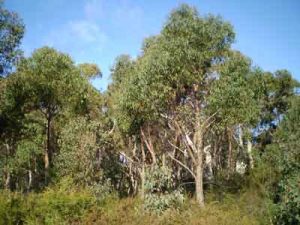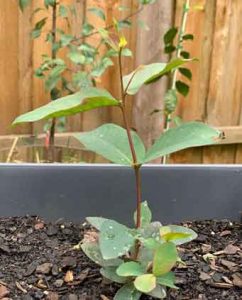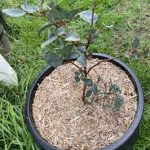Strawberry Gum

Over the last few years, we have seen a positive rise in the popularity of Strawberry Gum Eucalyptus Olida, which is no surprise, given the list of supposed health benefits, beautiful flavour and accessible information on growing this plant. It is said to be one of the newest identified eucalyptus species found in Australia but is attracting great interest as an Australian bush food. The tree has flaky and fibrous bark on the lower trunk and the larger branches. It has glossy grey green leaves and in spring, it produces cream-coloured flowers on top of small woody capsules.
Position
Strawberry gum was first discovered in the Northern Tablelands region of New South Wales, in a national park and in one freehold in the 1990's. Since then, it has grown in popularity and is now being cultivated in areas further south. It is still extremely rare but is growing in popularity because of the wonderful fruity flavour of the leaves.
Talking Dirty
 The strawberry gum is more suited to lighter soils but is highly adaptable. It is a medium size tree which has the ability to grow to 10-20 metres, but do not let this deter you from introducing it to your garden, as if it is regularly pruned, the size can be kept down and foliage will be more dense. When considering how close to a house or building you are planting the tree, it is important to keep in mind that the leaves are oil-rich and can combust in fires.
The strawberry gum is more suited to lighter soils but is highly adaptable. It is a medium size tree which has the ability to grow to 10-20 metres, but do not let this deter you from introducing it to your garden, as if it is regularly pruned, the size can be kept down and foliage will be more dense. When considering how close to a house or building you are planting the tree, it is important to keep in mind that the leaves are oil-rich and can combust in fires.
These trees are also pot tolerant, which is a useful characteristic for managing their size. They will benefit from high quality potting mix and a bamboo stake to encourage upright growth. When roots are visible at the base of the pot, repot to one that is approximately 4 times bigger.
Watering
A great thing about the strawberry gum plant is it both frost and drought tolerant so it makes it suitable to growing in most climates across Australia. This tree is drought hardy, although it is recommended to water sustainably whilst watering other plants in the garden, to encourage growth and plant health. It Is recommended for optimum plant health to water daily in the water months. If you have a potted strawberry gum tree at home a good indicator of when you should water it is by checking the hole at the bottom of the pot to check if the soil is dry.
Pests and Disease
Myrtle Rust is the most common disease caused by the fungus Austropuccinia psidii. Myrtle Rust attacks young, soft and actively growing leaves, shoots, steams, flowers and fruits. The sign of infection on leaves is usually lesions or chlorotic spots, the lesions usually turn red/brown and then can spread throughout the leaf. Sulfur, baking soda or neem oil have been listed as organic ways to treat Myrtle Rust, it is worth doing further research into these to see which solution would work best for you. Severe cases of rust can kill
Harvesting and Using
Leaves contain a highly aromatic oil which is the source of unique flavour, but it takes approximately 5 years until they are suitable for harvest. You can pick leaves individually, or cut whole stems or branches (approximately 60-80cm). Leaves can be dried and made into a delicious tea or they can be ground down to a powder to add flavour to pavlovas, biscuits or cake. Leaves can also be infused in a variety of liquids such as kombucha, tonics or soda water or made into a sugar syrup. A delicious recipe is HERE!



